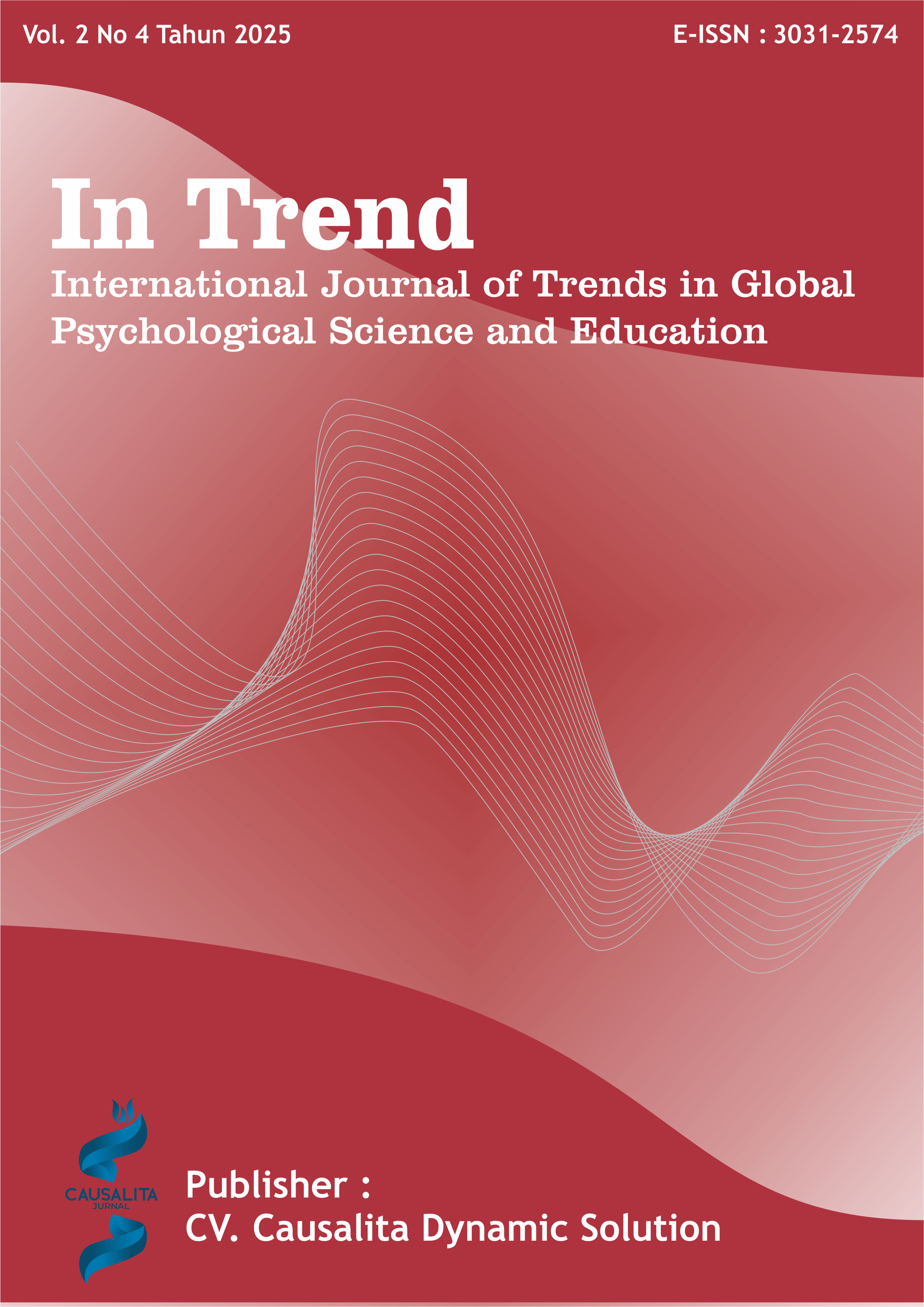Adaptation of the Digital Hoarding Questionnaire (DHQ) into an Indonesian Version
DOI:
https://doi.org/10.62260/intrend.v2i4.471Keywords:
Adaptation of Measurement Tools, Digital Hoarding, EFAAbstract
This study aims to adapt the Digital Hoarding Questionnaire (DHQ) measurement tool into Indonesian and test its factor structure using the Exploratory Factor Analysis (EFA) approach. The background of this study is the increasing phenomenon of digital hoarding amidst the massive use of digital technology, especially among students and urban communities. Scale adaptation was carried out through several stages, starting from forward translation, back-translation, content validation by experts, and trials on 302 participants selected through purposive sampling techniques. The results of the reliability test showed that the Indonesian version of the DHQ had a Cronbach's Alpha value of 0.882, indicating high internal reliability. The KMO and Bartlett's Tests showed that the data was worthy of further analysis (KMO = 0.887; p <0.001). Exploratory factor analysis produced a one-factor structure with most items having a loading factor above 0.4. This scale is proven to be valid and reliable for use in the context of Indonesian culture. This study recommends the use of the Indonesian version of the DHQ in digital psychology research, as well as further testing through Confirmatory Factor Analysis (CFA) and application to a wider population.
References
Azwar, S. (2020). Reliabilitas dan Validitas. Yogyakarta: Pustaka Pelajar.
Dewi, E., & Mulyana, A. R. (2022). Perancangan kampanye dampak menimbun barang tak terpakai (hoarding disorder) bagi remaja pasca pandemi. FAD, 1(01), 10-10.
Field, A. (2013). Discovering Statistics Using IBM SPSS Statistics (4th ed.). Sage Publications.
Gulotta, R., Odom, W., Forlizzi, J., & Faste, H. (2013). Digital artifacts as legacy: Exploring the lifespan and value of digital data. Proceedings of the SIGCHI Conference on Human Factors in Computing Systems, 1813–1822. https://doi.org/10.1145/2470654.2466240
Hair, J. F., Black, W. C., Babin, B. J., & Anderson, R. E. (2010). Multivariate Data Analysis (7th ed.). Pearson.
Luxon, A. M., Hamilton, C. E., Bates, S., & Chasson, G. S. (2019). Pinning our possessions: Associations between digital hoarding and symptoms of hoarding disorder. Journal of Obsessive-Compulsive and Related Disorders, 21, 60-68.
Neave, N., Briggs, P., McKellar, K., & Sillence, E. (2019). Digital hoarding behaviours: Measurement and evaluation. Computers in Human Behavior, 96, 72–77. https://doi.org/10.1016/j.chb.2019.01.037
Nen, S., Mohamad, M. S., Subhi, N., Sarnon, N., & Taufik, S. M. (2018). Perkaitan tekanan psikologikal, tingkah laku hoarding dan kesihatan mental dalam kalangan wanita bekerjaya. Jurnal Psikologi Malaysia, 32(2).
Sedera, D., Lokuge, S., & Grover, V. (2022). Modern-day hoarding: a model for understanding and measuring digital hoarding. Information & management, 59(8), 103700.
Slamet, R., & Wahyuningsih, S. (2022). Psikometri: Teori dan Aplikasi Pengukuran dalam Psikologi. Surakarta: UNS Press.
Tabachnick, B. G., & Fidell, L. S. (2013). Using Multivariate Statistics (6th ed.). Pearson.
Thorpe, S., Bolster, A., & Neave, N. (2019). Exploring aspects of the cognitive behavioural model of physical hoarding in relation to digital hoarding behaviours. Digital health, 5, 2055207619882172.
Van Bennekom, M. J., Blom, R. M., Vulink, N., & Denys, D. (2015). A case of digital hoarding. BMJ Case Reports, 2015, bcr2015210814. https://doi.org/10.1136/bcr-2015-210814
Downloads
Published
Issue
Section
License
Copyright (c) 2025 Dea Fenny Kirana Putri, Jihan Fadila Nawa, Aditya Briliant Ananta, Devi Lusiria

This work is licensed under a Creative Commons Attribution 4.0 International License.






